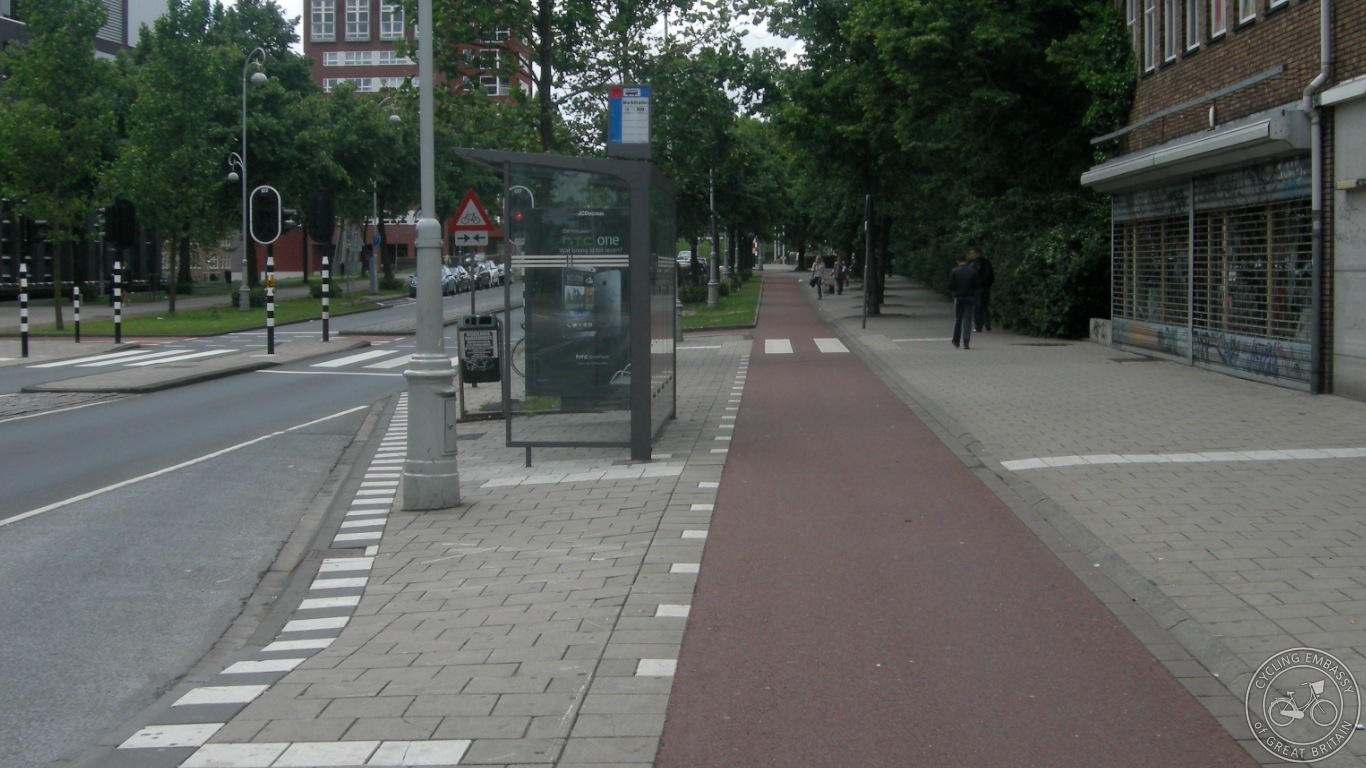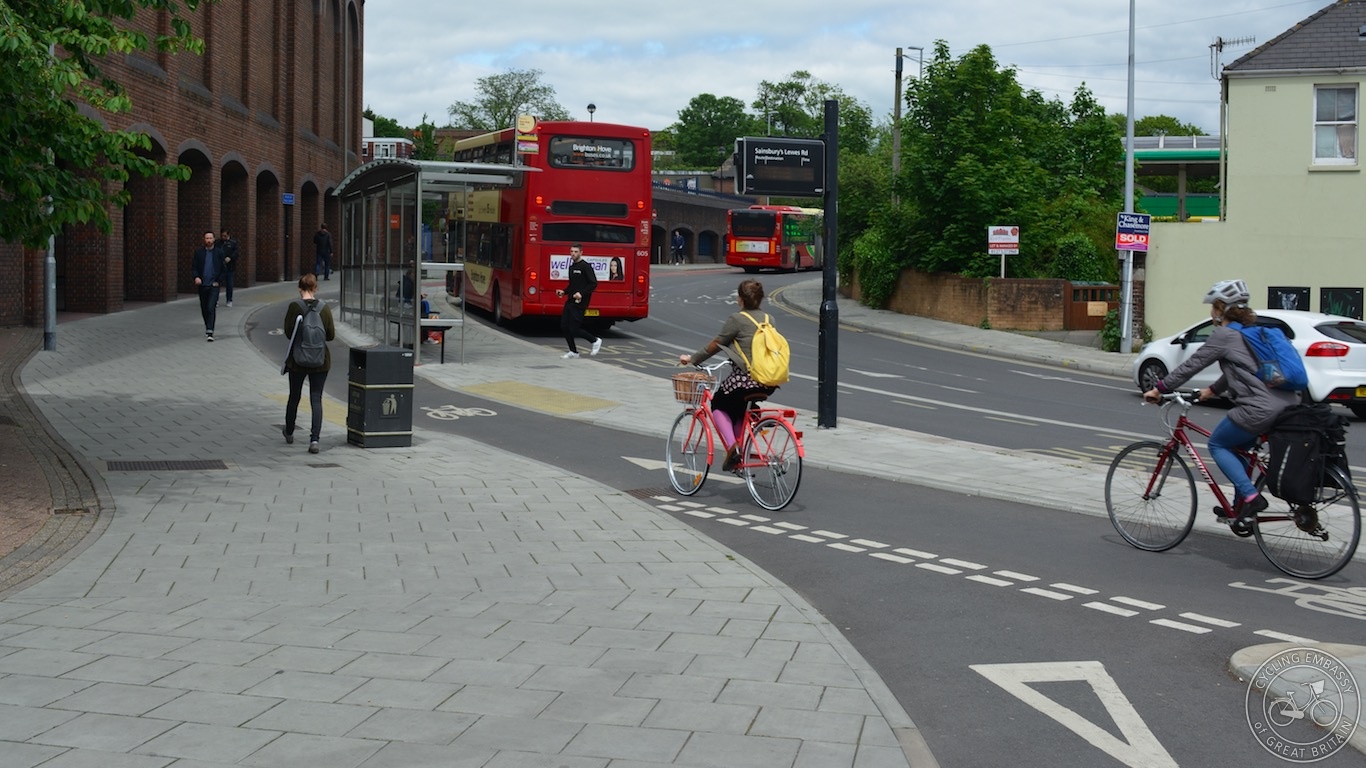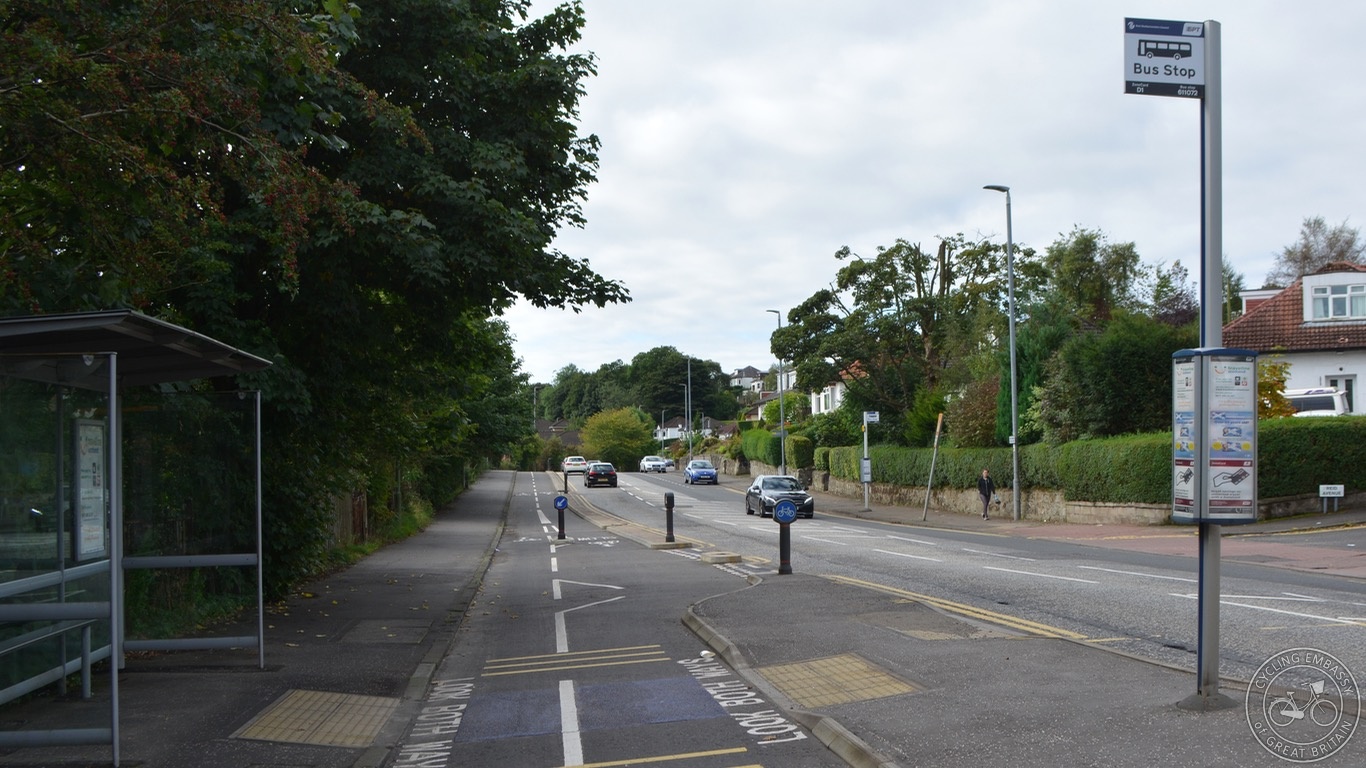Floating bus stop
Also known as a 'bus stop bypass', this is an arrangement that involves a cycleway running behind the passenger boarding area at a bus stop, between an island and the footway.

The bypass consists of cycle track which should be separated by kerbs from the footway, with minor level difference. For pedestrians it will resemble a small road they have to cross. If necessary, (informal) zebra markings can be provided to give pedestrians priority over cycle traffic, as in the example above. Tactile paving should be used to guide people to crossing points.
The cycleway should not involve swerves, or sharp corners - it should be designed to allow smooth and easy cycling, with good sight lines.
Floating bus stops can work in conjunction with either cycle lanes on entry and exit, or cycle tracks.
Unless space is at a premium, bus shelters and waiting facilities for bus users should be placed on the island, to avoid pedestrians crossing the cycleway en masse when a bus arrives, creating potential conflict.
The advantage of these layouts are that buses do not have to overtake cycles between stops, and people cycling do not have to negotiate out around stopped buses. In other words, there is no conflict between bus and cycle traffic. Floating bus stops are an essential element of separating cycling from motor traffic on through routes, for comfort and safety.
Ubiquitous in the Netherlands, and common across Europe, they are now appearing in Britain, with examples on Superhighway 2 on Stratford High Street, and (better designed) ones on Lewes Road in Brighton, shown below.








